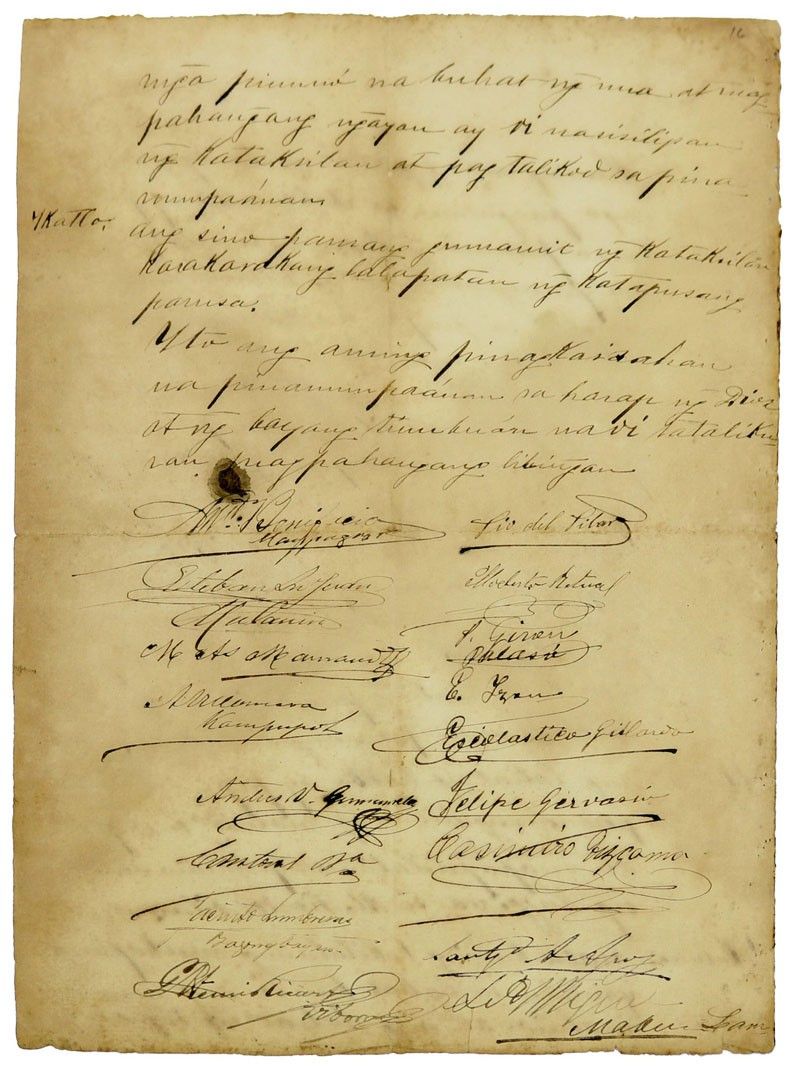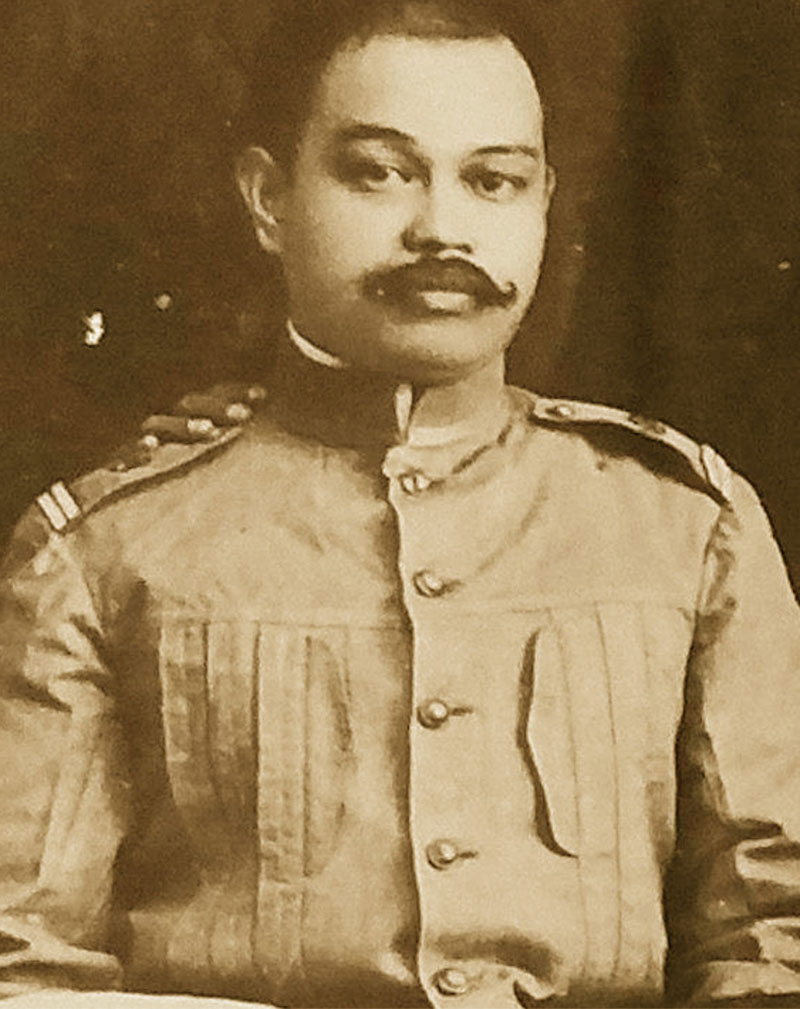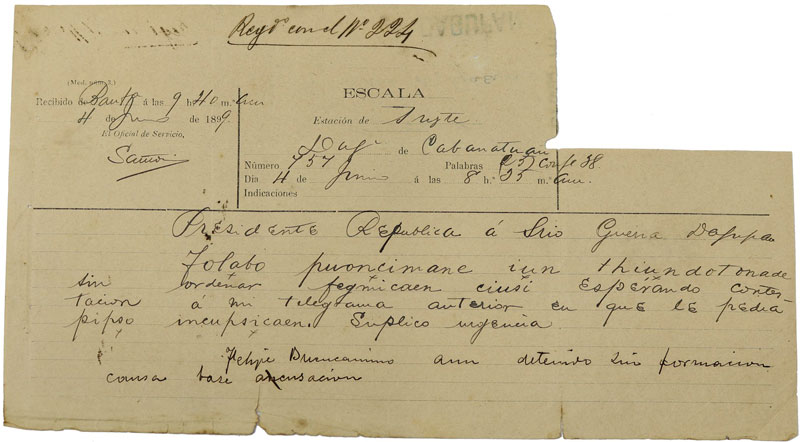Heneral Luna’s deadly telegram, Bonifacio’s Tejeros Proclamation

León Gallery kingly treasures auction
MANILA, Philippines — The good, the bad, and the ugly of Philippine history are in the spotlight of the upcoming León Gallery Kingly Treasures auction — the better to piece together our unquiet past. All of these amazing objects will be available for viewing beginning today until auction day on Dec. 1.

Andres Bonifacio
The mysterious telegram that summoned Hen. Luna to his fatal appointment in Cabanatuan has now been coaxed out of hiding from a private collector’s trove. Emilio Aguinaldo is said to have cabled these urgent instructions to his impetuous commandant dressed “only in an undershirt and shorts,” so disheveled was he from a sleepless night contemplating a monstrous decision.

Emilio Aguinaldo
Antonio Luna would receive El Presidente’s telegram while having supper in Tarlac on June 4, 1899 and would dash off a reply, unknown until now with the telegram’s appearance. “Felipe Buencamino not yet detained based on my accusation,” it says handwritten at the bottom.
Luna would die in a hail of bullets and knife-stabs unleashed by a troop of Kawit loyalists the following day.
Two years earlier, Andres Bonifacio himself would be outmaneuvered at the notorious Tejeros Convention which would depose him as Supremo of the Katipunan. He would be replaced by Emilio Aguinaldo, a young turk whom he had actually recruited for the KKK. On March 22, 1897, Bonifacio would be voted into the much more modest post of Secretary of the Interior and then his qualifications humiliatingly called into question because he did not have a law degree.

Hen. Antonio Luna
The very next day, Bonifacio would call his own conclave and the men gathered would sign the “Acta de Tejeros (Tejeros Proclamation)” which denounced the rigged voting and called the election results an affront to the nation. A few weeks later, Bonifacio would stage a coup d’etat and lure key Aguinaldo generals, Pio del Pilar and Mariano Noriel, to stand as his own military leaders. That move was embodied in the subsequent ‘Acta de Naik (Naik Military Agreement.’ In it, Bonifacio accused certain of the Magdalo of being ready to surrender to the Spanish.
For the first time in over 100 years, these documents are now available since they were first published by renowned scholar Epifanio de los Santos from whom these original documents come. De los Santos published these exceedingly important papers only in part, with only some of the signatures revealed. Now, the public as well as scholars may read the documents in full, and they offer stunning insights.

Artemio Ricarte
Amid the popular furor over Bonifacio’s fall from power, Aguinaldo would tread carefully but no less decisively. He would manage to shatter Bonifacio’s base in Cavite — luring away even the Magdiwang Council led by Santiago Alvarez to whom the Supremo was related through his wife. More importantly, he would retrieve the loyalties of his own double-dealing generals. In the end, Pio del Pilar and Mariano Noriel, although they had themselves conspired against Aguinaldo and his Magdalo, would be the first to stand as witnesses against Bonifacio and call for his death sentence.
Another general, the ferocious Artemio Ricarte codenamed “Viper,” would declare for Bonifacio in another extremely important document. Bonifacio would enclose this statement in his very last letter to his best friend Emilio Jacinto, written on April 24, 1897. Ricarte’s statement — thought to have been lost all these years — has now also been discovered and is also included in the upcoming auction. The KKK’s supreme head would be arrested by Aguinaldo’s soldiers on April 27 and would be tried and murdered a few weeks later.

The mysterious telegram to Heneral Luna from his son’s archive
There are, of course, many Filipino heroes as well worthy of remembrance: the exploits of General Manuel Tinio, lion of the North and commander of the Republic’s last army during the Philippine-American War, are brought to life with a rare dagger, emblazoned with the words “Ylocana, Filipinas” on one side and “1899” with the Filipino sun and stars on the other. The blade is finely engraved, with a hilt of silver and horn. Its leather scabbard is also decorated with silver. Tinio, who helmed a famous brigade with his name, governed Ilocos Norte, Ilocos Sur, Abra and La Union, and also the “comandancias” of Amburayan, Lepanto-Bontoc and Benguet.

The Tinio Brigade dagger marking the exploits of the heroic Ilocano command
Tinio had 1,904 men — courageous heroes all — consisting of 68 officers, 1,106 riflemen, 200 bolo-men, 284 armorers, 37 medics, 22 telegraphers, 80 cavalrymen, 105 artillerymen and two Spanish engineers. It was a magnificent operation, according to Philippine-American War historian Arnaldo Dumindin, that won hard-earned praise from another brilliant strategist. Hen. Antonio Luna would say that the Tinio Brigade was the most disciplined unit in the Philippine Army. It would eventually take the Americans 7,000 troops from the mightiest army on earth one year and a half, and two generals, to “subdue the Tinio Brigade,” said Dumindin. The initials “T.B.” are inscribed on one silver end of the scabbard. It’s a part of our history that is glorious to contemplate.



















